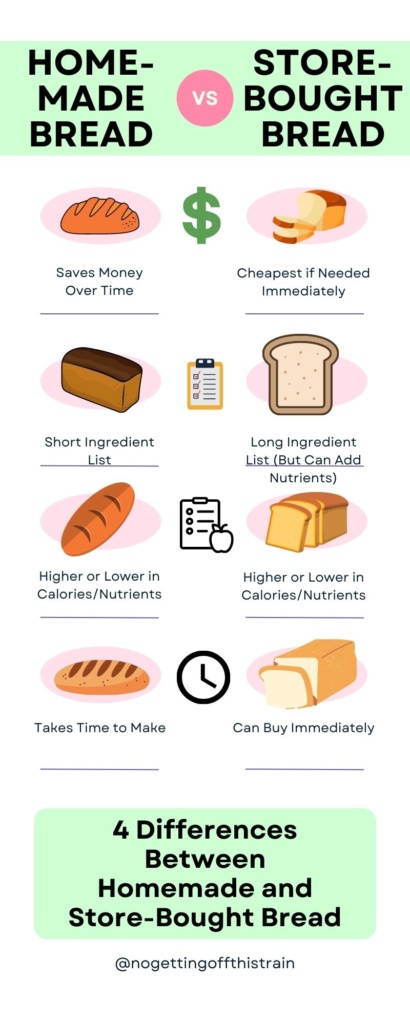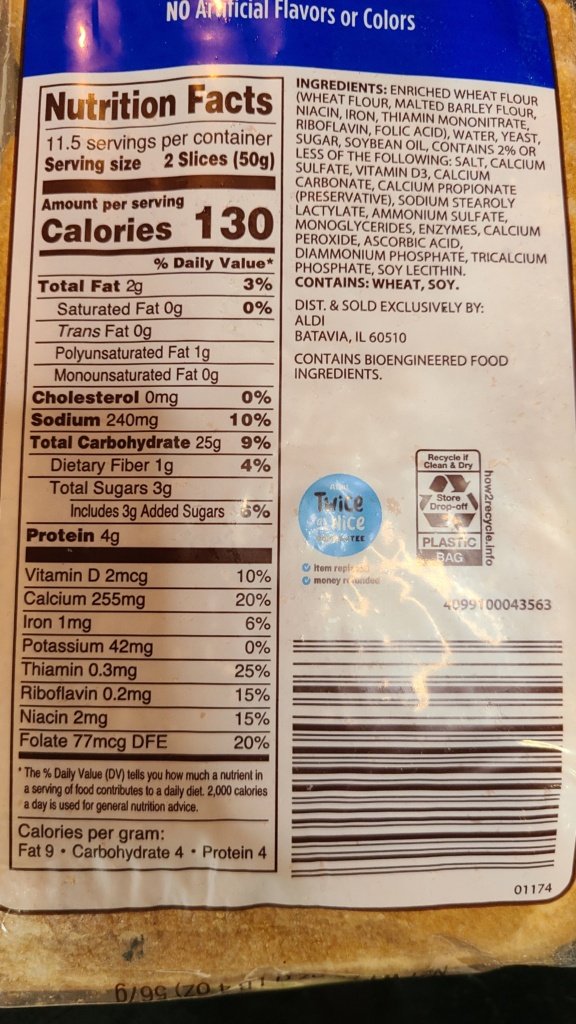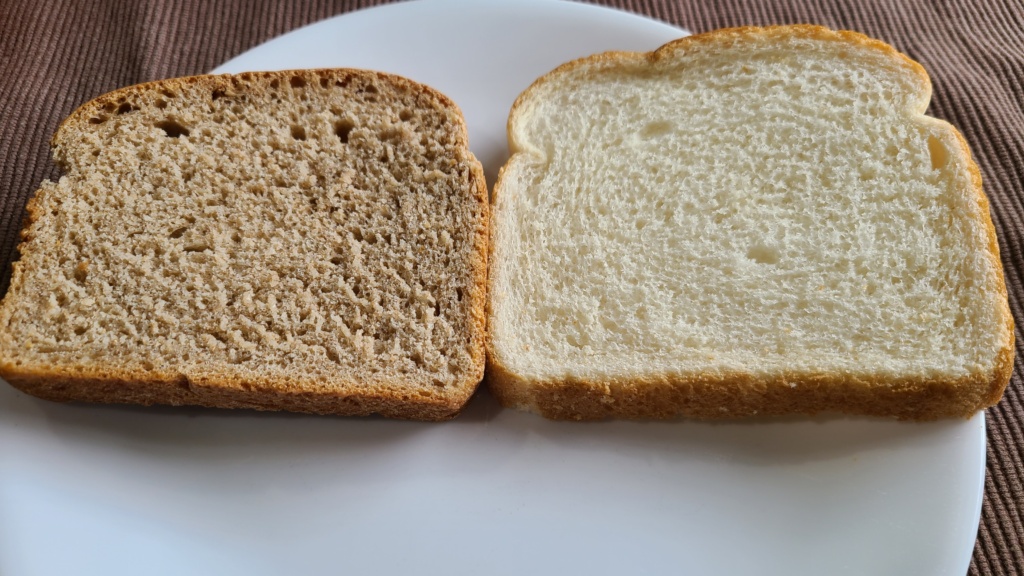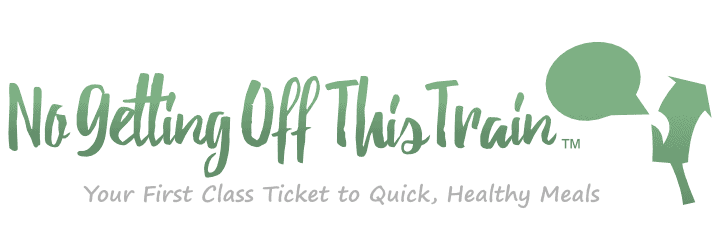What are the differences between homemade bread and store bought? Which is healthier and which costs less? Read on to get all the details!
Which bread is better: Homemade or store-bought?
The short answer: Both can be the better choice depending on many factors. Home-baked bread can have a better taste and more nutrients, while store-bought bread can be cheaper and easier in the short-term.
I’ve seen this question asked and answered MANY times, as I’m sure you have too. How many loaves of bread can you make with the money used to buy a loaf? Is store-bought bread bad for you? What is healthy bread?

For a long time, I’ve wanted to put together a list of pros and cons because all the info out there can get REALLY confusing. I’ve made my own fresh bread many times, and buy a loaf almost every week; but I’ve never really sat down to figure out which is better.
In this post, I’m comparing a store-bought loaf to a homemade loaf in different categories: Ingredients, nutrition, cost, and effort.
This graphic has a quick overview, but be sure to read further for more details!

Store-bought bread
For this experiment, I bought the Aldi brand standard white commercial bread. Aldi has SO many types of bread; but I wanted to keep this part simple. It was the cheapest loaf and seemed to be the most popular.

Ingredients
When you take a look at the ingredient list, you see a lot of words you may not be able to pronounce. And some people go by the rule of “If you can’t pronounce it, don’t eat it”.

But honestly, it’s not as scary as it seems. Let me break some of this down for you.
- Niacin: Vitamin B3
- Thiamin mononitrate: Vitamin B1
- Riboflavin: Vitamin B2
- Folic acid: Vitamin B9
- Calcium sulfate: Dough conditioner/strengthener, increases shelf life
- Diammonium phosphate: A nutrient for yeast
This bread has a combination of added vitamins, as well as stabilizers to increase shelf life. It’s also made with white flour instead of whole wheat, which means its been stripped of certain nutrients and fiber.
Some people are nervous about preservatives in food, and that’s okay. You have to do what’s best for you and your family. Preservatives tend to get a bad rap, but they can be useful if you can’t get to your local grocery store and need food to last longer.
Also, some breads can contain high fructose corn syrup. Some people like to avoid that, so just make sure you read the ingredient list carefully.
Nutrition
- 130 calories for 2 slices
- 25 grams of carbs
- 1 gram of fiber
- 3 grams of added sugar
- 4 grams of protein
None of this is “good” or “bad”, but just information for you. If you’re trying to increase your fiber intake, you might want to find a different kind of bread.
The nutritional value besides that is not too bad. This white bread is fortified with extra vitamins, which is useful if you don’t usually get enough.
You just have to know what your body needs and what to buy to fuel it!
Cost
This loaf was 95 cents. It’s a standard price for a standard loaf of bread, and really good if you’re on a budget.
You don’t have to buy all the ingredients like yeast, flour… if all you have is a dollar, then buying a loaf is the way to go.
Effort
Simple. You go to the store, you buy it, you’re done. No waiting for the dough to rise, for the loaf to bake in the oven… it’s ready to eat and a great way to get quick carbs.
When you have a busy schedule, sometimes the best thing for you is to buy a convenient loaf.

Homemade bread
For this experiment, I made this Honey Whole Wheat Bread. It’s not a one-to-one comparison, but it’s the type of bread I would typically make for my family and is one of my favorite bread recipes. Plus, it makes TWO loaves; so I get more with the same amount of effort. And you don’t even need a bread maker.
Ingredients
Here is the ingredient list for this bread:
- Whole wheat flour
- All purpose flour
- Yeast
- Salt
- Honey
- Butter
It’s a much smaller ingredient list than the store-bought loaf, and fewer additives. Again, that doesn’t mean it’s good or bad. The store-bought has added nutrients, while this homemade loaf does not.
This loaf also contains basic ingredients that I usually keep in the house. Yeast may not be something you have on a regular basis, and that’s fine!
Nutrition
- 198 calories for 2 slices
- 43 grams of carbs
- 3 grams of fiber
- 6 grams of sugars
- 6 grams of protein
This bread has slightly more protein than the store-bought, and more than double the fiber. This can help keep you full for longer periods of time.
A lot of this is due to the whole grains in the whole wheat flour. Whole grain flours aren’t typically stripped of nutrients like white flour, so this is a good way to get in extra fiber.
Does homemade bread have fewer carbs?
If you’re on a low-carb diet, you’re probably very conscious about the number of carbs in foods. Higher amounts of carbs can spike blood sugar levels and can be problematic with those dealing with diabetes.
But there is no correct answer here. The serving size is what matters. A smaller slice of bread will have fewer carbs than a larger slice.
However- you can look for bread that is high in fiber, as that will sometimes offset the sugar spike. Use your best judgment and talk to your doctor about best options!
Cost
The cost can get a little tricky. You do pay more up front for all the ingredients; but you’ll have a lot left over to make more bread in the future.
Here’s a breakdown of the cost of my whole grain bread, both for the entire package and just the amount used for the recipe:
- Whole wheat flour: $4.69 for 5-lb bag, $1.05 for the recipe
- All purpose flour: $1.35 for 5-lb bag, $.20 for the recipe
- Yeast: $4.99 for 4-oz jar, $.93 for the recipe
- Salt: $.49 for 26-oz container, $.01 for the recipe
- Honey: $3.99 for 12-oz jar, $1.50 for the recipe
- Butter: $3.00 for a 1-pound box, $.38 for the recipe
- Total cost: $4.07, or $2.03 per loaf
Now as you can see, this particular recipe can be more expensive. I used whole wheat flour and honey, which really drove up the price.
If you were to make a standard white loaf, it would probably come out to about 75 cents or less per loaf.
Also, I’m not including electricity cost in this. It may cost a couple extra cents to use the oven, but not enough to sway me one way or the other.
Effort
Yes, homemade bread can take quite awhile to make. Whether you use a stand mixer or a bread machine, the process is long.
You have to mix the dough, let it rise, knead the dough, let it rise again, and then bake it.
Honestly, the whole process can take up to 3 hours. You probably only have about 20 minutes total of hands-on time, but not everybody has 3 hours to sit at home.

The Winner
So here’s the ultimate question: Which one is the healthier choice? Store-bought or homemade?
And my (non-professional) opinion is:
If you have the time, and your family eats a lot of bread, make homemade.
If you’re on a budget and/or don’t have much time, buy store-bought.
Honestly, there is no “healthiest” bread, because our standard of “healthy” is so different from one another. My version of healthier bread may not need fiber, but yours might.
I believe a loaf of homemade bread tastes SO much better than store-bought, yet most weeks I usually just buy a loaf. It all depends on my mood.
Maybe you can try making a loaf for special occasions just to see if you like it. Honestly, there’s nothing better than your own homemade bread. (And you can freeze both homemade and store-bought bread!)
In either case, I hope all of this makes sense to you. In the long run, the decision to make vs. buy your own bread is personal, and this info should give you insights on the differences!
Frequently Asked Questions
Is homemade bread allergy friendly?
When you make your own bread, you control what ingredients go inside. So you can make it allergy-friendly, as long as you’re informed about your own needs.
The first type that comes to mind is gluten-free bread. You can make your own, and you won’t risk contamination as long as the other ingredients in your house are gluten free.
Why does homemade bread have more calories than store-bought?
Typically, homemade bread contains more nutrient-dense ingredients. And that raises the amount of calories. That doesn’t make it any better or worse than store-bought, but it’s just information to remember.
How do you store homemade bread?
Once your fresh baked bread has cooled to room temperature, store it in an airtight container or tightly-zipped plastic bag.
On the counter, it’ll stay fresh for maybe 2-3 days. In the fridge, I’ve found it stays fresh for up to 7 days.
Does bread raise blood sugar?
Eating carbohydrates can cause a spike in blood sugar levels, which gives you a burst of energy. But with a quick spike comes a quick energy crash afterward.
Fiber can help slow down the absorption of the carbs, giving you more steady energy. If you’re looking for that, buy the 100% whole wheat bread for more fiber.
Is it cheaper to make your own bread?
The ingredient costs might be higher up front, because you’re buying a large amount of flour and yeast. But if you commit to making your own bread every week, you may end up saving a little money.
And honestly, I may be talking pennies saved. It depends on what kind of bread you typically buy.

Jaime is a Nutrition Coach through the ISSA and professional writer. She has 4 years experience coaching and 9 years experience in writing. She enjoys cooking easy meals, running, and learning more about food.
Jaime specializes in helping women with ADHD learn to meal plan and cook healthier meals without getting overwhelmed.

simonne T mossholder
Friday 13th of October 2023
How about sodium content?
Jaime
Friday 13th of October 2023
Great question! Each loaf of bread is different. You may be able to find some recipes that are low-sodium! If you need to watch your sodium intake, definitely check the labels before you buy!
christine
Sunday 5th of March 2023
I did hear recently that shop bought bread does contain alot of sugar-so if i was to eat 2 slices of bread everyday its not good is it.
Jaime
Monday 6th of March 2023
Hi Christine! If you don't have any medical issues, then you're totally fine to eat bread. If you're worried about sugar spikes, I recommend whole wheat bread. It has more fiber and helps release sugars more slowly, giving you steady energy.
Andrei Shaiko
Saturday 9th of July 2022
If the person make bread at home and then buying bread in the supermarket, this means that person do not really know how to make a really good bread. If someone knows the simple secrets of homemade bread making process, that person never going to buy bread in the store by his or her personal will.
Mary
Friday 29th of April 2022
What manufacture of. Bread machines do you recommend/ use? I had a not a good experience with a bread machine. I tried different settings in hope.
Mary
Friday 29th of April 2022
I enjoyed the information. Thank you!?